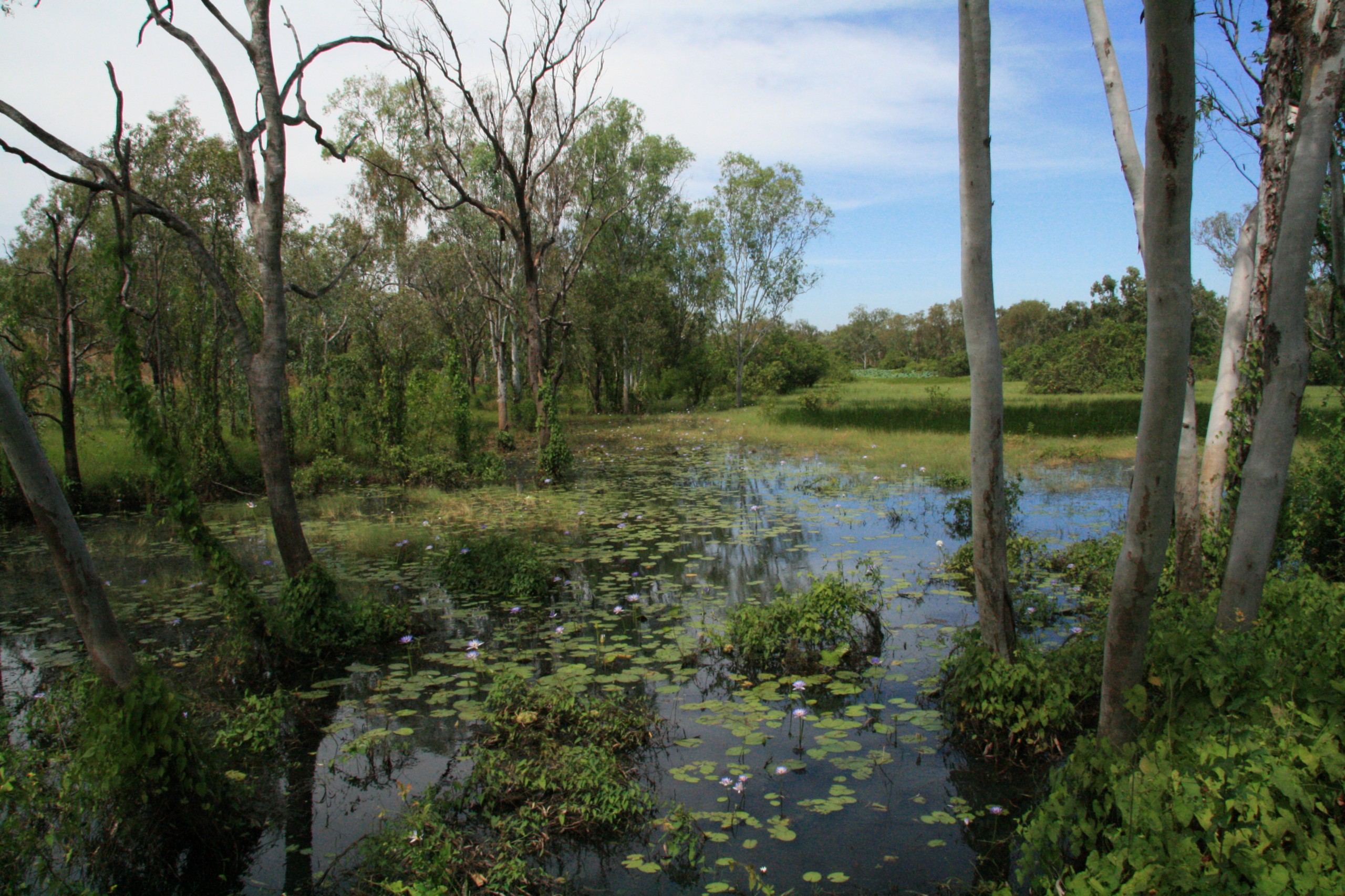

“Our people do not fish in the pools where Bolung sits. When fishing close to these pools, we can take only a small portion of the fish caught. We throw back the rest in order to appease Bolung.”
–From a Jawoyn “Dreaming” story about Bolung, the rainbow serpent

How should we manage our natural resources when conventional science doesn’t give us a complete picture of what’s going on? Here’s an idea–why not make use of existing knowledge that’s been kicking around for millennia?
Indigenous Australians have passed down both folklore and practical information about local ecology and used it to manage the environment for generations. Prior to European settlement, they used controlled fires to shape the land, clearing vegetation, controlling animal pathways, and rejuvenating grasses and bushland. Traditional hunting and food-gathering have always been carried out in a sustainable manner to ensure species’ survival. And still today, the river is treated with respect. According to one ancient story, the life-giving figure Bolung lives in deep pools. It’s important that Bolung remains undisturbed, because he can also act as a destroyer.
In recent years, scientists have been working with indigenous communities to integrate aboriginal knowledge of fish species with scientific data to plan for better water management. A partnership between researchers and three indigenous groups created an environmental-flow risk assessment for the Daly River catchment in the Northern Territory. The catchment is home to over 50 species of fish, including the iconic barramundi.
The collective of researchers and locals obtained scientific data by dry-season fish-sampling in the field and from past studies. It gathered indigenous knowledge of freshwater fish through group and one-on-one interviews at the fish-sampling sites. The Jawoyn, Wagiman and Wardaman language groups are landowners and traditional custodians within the catchment area, and they were able to provide extensive information about local fish species, which play an important role in their cultural and economic life.
More than just a food source, the fish are a fundamental part of creation lore and are also an indicator of the health of the river system, informing the holistic water management practices of local people. Indigenous contributors highlighted the need for their involvement in managing catchment activities and the importance of accounting for indigenous preferences, values, and religious obligations.
While scientific and indigenous methods are worlds apart, throughout the project it became plain that they can complement each other. Indigenous knowledge (learned over a very long period of time) boosted confidence in the scientific data, which was only collected during the dry season. The indigenous groups also added to the data, for example, by identifying the importance of predation by barramundi. The team reported that their “rich knowledge of fish predation and understanding of the factors influencing flow changed the scientists’ conceptual understanding of the flow ecology.” And where there were gaps in indigenous understanding, the scientific data was able to inform a centuries-old knowledge base.
The resulting flow assessment was a detailed conceptual map of fish abundance for different flow scenarios, providing risk assessments of different water development scenarios and recommendations relating to two high-risk species, the barramundi and black bream. Stakeholders like the Northern Territory government, indigenous landowners, and recreational anglers have consulted the model, and it will be of further use to the government in reviewing water allocation plans. Dr. Sue Jackson of Griffith University, a lead scientific researcher for the project, explained to me that the work forms a critical part of a broader integrated assessment of the impact of water management on indigenous and non-indigenous peoples.
Crucially, the process also assisted in the continued preservation of local fish knowledge, which has been dwindling as a result of rapid social change. Storytelling has always been used to pass on ecological knowledge to the younger generations in the community, and the project helped to revitalize this practice. Mona Liddy, a Wagiman elder, reported that “participation of young people instilled pride and recognition in future leaders–it strengthened their spiritual ties to country, their community, and identity.” So, looking to the future, it seems there will still be a place for the traditional practice of telling “stories about fish.”


How We Get To Next was a magazine that explored the future of science, technology, and culture from 2014 to 2019. This article is part of our Nature & Climate section, which looks at how human activity is changing the planet–for better or worse. Click the logo to read more.
